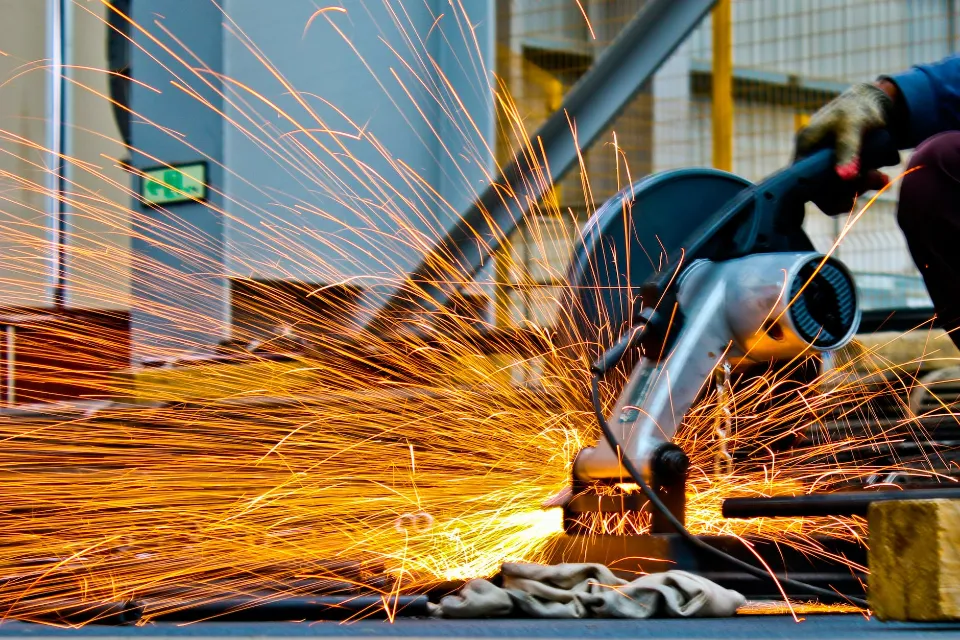
Fire dampers are passive fire protection products used in heating, ventilation, and air conditioning. To stop a fire from spreading through fire-resistant-rated walls and floors and into HVAC (heating, ventilation, and air conditioning) ducts. Continue reading, you will learn more facts about fire dampers like where it is used and their purpose of fire damper.
Table of Contents
What is Fire Damper?
Fire dampers respond to heat, when the temperature reaches a set point the damper slams shut. When smoke is detected, smoke dampers respond by automatically closing. Also, they can be remotely turned on. They obstruct the passage of air, toxic gases, and smoke through a fire barrier.
What is the Purpose of Fire Dampers?
Fire dampers are used in duct openings, air transfer openings, and other locations where fire-rated structures (such as walls, floors, or other fire barriers) are penetrated. If these openings weren’t shielded, the fire could easily spread to other areas, harming the building and posing a risk to those who work or reside there. The purpose of compartmentation is to contain the fire and stop it from spreading to other areas. This aids in containing and putting out the fire and reduces the overall harm done to the building and environment.
In fire-related accidents, the threat of fire itself is not the only one. Particularly in areas where various chemicals are produced or stored, smoke and other gases released by the fire can be very dangerous to people. These gases spread quickly, and depending on the substance, even small doses can be fatal or extremely dangerous to people. In addition to providing fire protection, special seals can be used in fire dampers to achieve gas tightness and stop the spread of these dangerous gases.
What Are the Components of Fire Dampers?
There are many different components and parts available to ensure compliance with project requirements, environment, and specifications. Although the fire damper’s fundamental operation won’t change, Halton R&D is working to find creative solutions to support the systems where fire protection plays a crucial role.
What is the Purpose of a Fire Damper?
A fire damper is made to stop airflow and prevent the spread of flames by automatically closing when heat is detected (using a fusible link or heat detector, for example).
How to Operation of Fire Dampers?
Fire dampers work in a straightforward manner, closing when the temperature in the room or space exceeds the threshold limit to stop the fire from spreading. Fusible links on Halton fire dampers are adjustable for temperature. The damper closes when this temperature is reached.

The actual damper itself can be manually adjusted, pneumatically operated, or both. Fusible links that are used in electric and pneumatically operated dampers release and cut off power to the spring return motor, allowing the spring to close the damper blades. When the fuse is changed and the operating voltage to the motor is restored, the fire damper opens automatically. Fusible links in dampers that are operated by a spring release, allow the spring to close the damper blades. The fire damper needs to be manually reset to the open position after the fuse has been changed.
Where Do I Need Fire Dampers?
Generally, fire dampers are required where air ducts penetrate walls that are rated for 2 hours or more. It doesn’t matter what the rating is; they are required in all non-ducted air transfer openings in rated walls. They are additionally necessary at some, but not all, penetrations of rated floor assemblies and shaft enclosures.
What Are the Most Common Installation Errors?
- Duct mounting directly to the Fire Damper Frame is not permitted.
- Rigid Duct — Sleeve connection that does not adhere to the SMACNA-recommended sleeve thickness (table 5-2). It’s important to remember that improper installation techniques could invalidate the damper’s UL listing.
What Are the Three Types of Fire Dampers?
Fire dampers are made to prevent fire from entering ducting and other types of building openings. Fire dampers typically come in three different designs: smoke dampers, static fire dampers, and dynamic fire dampers.
Conclusion on Fire Damper
A fire damper is a device that is inserted into an air distribution system or an air transfer opening and is intended to automatically close upon the detection of heat, interrupting airflow and thereby limiting the passage of fire.



